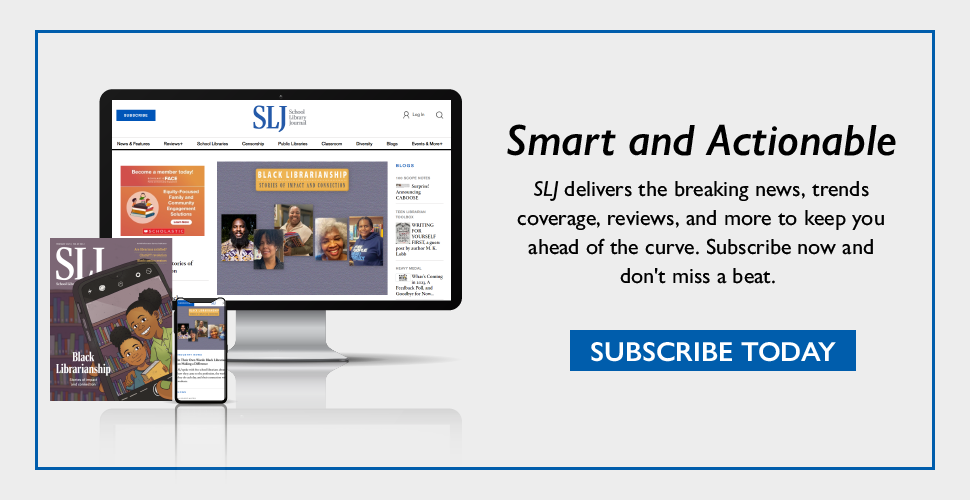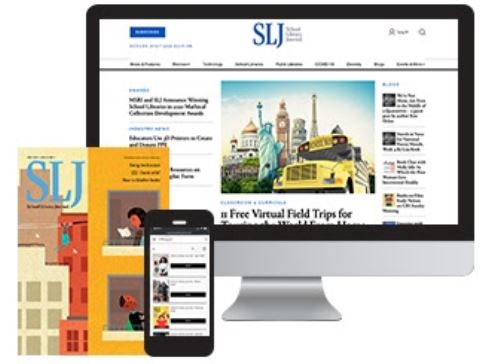2018 School Spending Survey Report
In Teen Programming, Value the Process Over the Product
How to best serve teenagers? Step out of their way, let them plan, and avoid these mistakes.
 Looking back, I realize that although I was drawing ideas from teen programming books, the method I was using to plan activities for young adults was the same as the way I, as a children’s librarian, had planned programs for preschoolers: with librarian serving as selector/creator/implementer of activities (think storytime) and children/parents participating as audience. But teen programming isn’t like storytime. It also isn’t like school: Teenagers simply don’t have to be there. Participation can’t mean offering young adults an opportunity to do a prescribed activity—whose outcome has been predetermined by the librarian. Participation must mean that teens have a decision-making role in planning and responsibility for the end product. They need to be placed in charge of their own programming experience. In my situation, when I began asking teens what programs they wanted, I also began making new errors: First mistake: I was asking the wrong questions, and teens told me what they thought I wanted to hear. No, they didn’t really want a book club, but that seemed like the right answer to give the librarian asking, “What do you want me to plan for you?” Second mistake: It was my intention to take their ideas and “sell” them back to the teens as library programs. This continued to eliminate the possibility of their “ownership” of programs and maintained a high level of librarian mediation. Third mistake: I began to think of these young people as a Teen Advisory Group. The idea of teens as advisors (TAG/TAB teen advisory group/board) can work for some librarians, but it can be deeply flawed. Over the years, I’ve heard many colleagues lament that even when they produced programs specifically requested by the TAG, none of the members attended (see: First mistake and Second mistake). I suggest this may be because teens were not invested in the process of planning the programs. Ideally, teens should not be peripherally involved as advisers, but should be given responsibility and decision-making authority. Programming—process and production—should be entirely handed over to them. We need to step out of their way.
Looking back, I realize that although I was drawing ideas from teen programming books, the method I was using to plan activities for young adults was the same as the way I, as a children’s librarian, had planned programs for preschoolers: with librarian serving as selector/creator/implementer of activities (think storytime) and children/parents participating as audience. But teen programming isn’t like storytime. It also isn’t like school: Teenagers simply don’t have to be there. Participation can’t mean offering young adults an opportunity to do a prescribed activity—whose outcome has been predetermined by the librarian. Participation must mean that teens have a decision-making role in planning and responsibility for the end product. They need to be placed in charge of their own programming experience. In my situation, when I began asking teens what programs they wanted, I also began making new errors: First mistake: I was asking the wrong questions, and teens told me what they thought I wanted to hear. No, they didn’t really want a book club, but that seemed like the right answer to give the librarian asking, “What do you want me to plan for you?” Second mistake: It was my intention to take their ideas and “sell” them back to the teens as library programs. This continued to eliminate the possibility of their “ownership” of programs and maintained a high level of librarian mediation. Third mistake: I began to think of these young people as a Teen Advisory Group. The idea of teens as advisors (TAG/TAB teen advisory group/board) can work for some librarians, but it can be deeply flawed. Over the years, I’ve heard many colleagues lament that even when they produced programs specifically requested by the TAG, none of the members attended (see: First mistake and Second mistake). I suggest this may be because teens were not invested in the process of planning the programs. Ideally, teens should not be peripherally involved as advisers, but should be given responsibility and decision-making authority. Programming—process and production—should be entirely handed over to them. We need to step out of their way. Teen librarian as facilitator and advocate
Program planning is fun and can be a source of much professional satisfaction. But the goal is not for librarians to express their creativity and interests. It should be for teens to craft their own experiences without librarians (and their agendas) insinuating institutional or personal expectations. The experiences young adults have during the process of program planning are far richer than the actual program itself. Young people who share an affinity for a subject, or who simply want to help the library, experience brainstorming, teamwork, decision-making, budgeting, organizing, and diplomacy. So librarians need to rethink their role—from one of creation and implementation to one of facilitation and advocacy. Asking young adults about their interests, observing what activities they engage in at the library, and understanding how these casual, independent activities (game playing, drawing, video watching, music listening, joke telling, etc.), can lead to teen-led initiatives. Within the organization, the role of the teen librarian is not only to advocate for teen programming as a vital service, but for the recognition of teens as partners and participants in their library programming experience. We need to affirm the appropriateness of having teens own the program development process, so administrators and decision-makers understand the value of this method.A container for the planning process
As the planning process evolves, develop a structure to make the process consistent and quantifiable. The librarian’s interaction should be limited to asking what teens need to produce their desired activities—and to advocate for budget and supplies. Don’t expect your planning group to attend two activities: both a planning meet and a program. Structure their time so that the first part of their meeting is the process time—when upcoming programming is planned—and the second part is product time—when they present the idea and how to carry it out. Make a calendar entry: On Wednesdays at 5 p.m., the teen planning group, which is open to the public, meets; on Wednesdays at 5:30 p.m., there is a teen-led activity. Additionally, advocacy mean ensuring that young adults’ contributions are valued. For example, the time they spend planning can count as volunteer service. They are producing something for the library and the community. Shifting the responsibility of program planning to the end users—teenagers—offers them a fuller, more meaningful library experience of their own design. Jennifer Velásquez (@jenVLSQZ) is a lecturer at the San Jose State University School of Information (CA) and teen services coordinator at San Antonio (TX) Public Library. She is a 2011 Library Journal Mover & Shaker and recipient of the New York Times Librarian Award (2005). Her book, Real-World Teen Services, is available from ALA Editions.
Jennifer Velásquez (@jenVLSQZ) is a lecturer at the San Jose State University School of Information (CA) and teen services coordinator at San Antonio (TX) Public Library. She is a 2011 Library Journal Mover & Shaker and recipient of the New York Times Librarian Award (2005). Her book, Real-World Teen Services, is available from ALA Editions. RELATED
RECOMMENDED
CAREERS
The job outlook in 2030: Librarians will be in demand
CAREERS
The job outlook in 2030: Librarians will be in demand
ALREADY A SUBSCRIBER? LOG IN
We are currently offering this content for free. Sign up now to activate your personal profile, where you can save articles for future viewing






Add Comment :-
Be the first reader to comment.
Comment Policy:
Comment should not be empty !!!